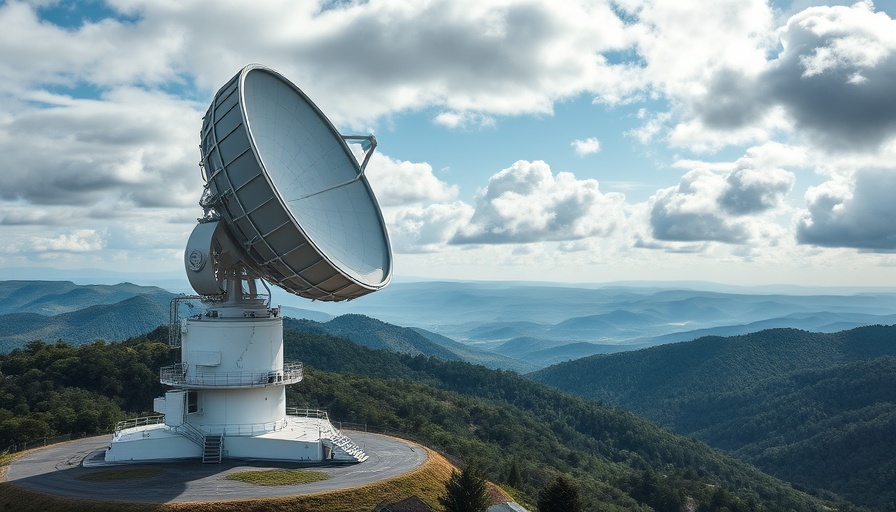
Unveiling the Mysteries of Fast Radio Bursts
In March 2025, the Earth was momentarily illuminated by a fast radio burst (FRB) named RBFLOAT, releasing energy equivalent to what our sun produces in four days. This remarkable event has significant implications for the study of cosmic phenomena and showcases the advancements in our observational capabilities. With the help of the CHIME (Canadian Hydrogen Intensity Mapping Experiment) telescope and its subnetwork of Outrigger stations, astronomers successfully tracked this FRB, which originated from the NGC 4141 galaxy, located 130 million light-years away.
How It All Came Together: The Role of Advanced Technology
The recent success can be attributed to advancements in telescope technology and analytical methods. CHIME is not just capable of detecting these fleeting bursts but is now building a statistically significant sample of FRBs. By pairing discoveries with data from optical and X-ray telescopes, researchers achieved an unprecedented localization precision of just 13 parsecs (approximately 42 light-years). This is a game changer in how we understand and classify these enigmatic signals that formerly had researchers flummoxed.
What Lies Beyond? Theories About FRB Origins
As scientists continue to investigate, the origin of FRBs remains somewhat of an enigma. The prevailing theory suggests that these bursts likely arise from extreme cosmic events. For instance, RBFLOAT's location in a star-forming region hints at its potential connection to magnetars—neutron stars with intensely strong magnetic fields. Such findings are crucial as they not only help decode the FRB puzzle but also unveil insights into the processes that govern star formation and evolution in distant galaxies.
The Bigger Picture: Implications for Space Exploration
The detection of RBFLOAT exemplifies how our journey into the cosmos is supported by a network of collaborative efforts across various scientific disciplines. This research aligns with ongoing discussions about technologies that explore the universe and the barrage of data that comes with them. As reported in various sectors of tech news today, such as space exploration and robotics innovations, the improved methodologies and collaborative approaches can pave the way for future discoveries that will likely reshape our understanding of the universe.
Looking Ahead: Future Technology Trends in Astronomy
This unprecedented capture also leads to some critical future technology trends in astronomy. With the impending launches of various space observatories and advancements in artificial intelligence, the assimilation of massive datasets will likely yield further insights into cosmic phenomena. The transition towards AI-assisted analysis allows for rapid processing of astronomical data, effectively bridging the gap between data collection and interpretive understanding.
A Call to Action: Staying Informed in a Rapidly Evolving Field
The excitement surrounding discoveries like RBFLOAT reflects not just advancements in one particular field but emphasizes a collective forward momentum in technology and discovery. Since we're witnessing the birth of cutting-edge techniques shaping the future of space exploration, it is essential to stay informed about these developments. Subscribing to tech news platforms where insights about new gadgets, future technology trends, and cybersecurity happenings are shared ensures you remain at the forefront of innovation.
To navigate and understand these fascinating stories in the realms of astronomy and technology, explore updates, broaden your understanding of these cosmic phenomena, and enhance your knowledge of how they may impact our world.
 Add Row
Add Row  Add
Add 




Write A Comment